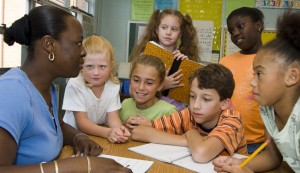
There was a little girl in just the 3rd grade who was very active and loved to do things outside. She loved to play ball and ride her bike, climb trees and just have a lot of fun. Her classmates have started to make fun of her and especially of her short hair. This is Samantha and really she is very cute and loving. However, the taunts of her friends really is starting to bother her and she does not like to hear them.
This is a classroom that needs to learn that put-downs are not cool. They have not built a peaceful and kind culture yet. In a situation like this the teacher wants to work with the whole class. Building a culture of peace could begin with recognizing that we are the same and different at the same time taunts of her friends really is starting to bother her and she does not like to hear them.
You could start with a game of “I’m Looking For”. The simple version is to make a circle and have one person ask a question, “I’m looking for everyone with brown eyes.” Then everyone with brown eyes comes to the middle of the circle. They can go back out and a new ‘looking for’ question is asked. After everyone has a chance to ask questions about favorite colors, pets, color of hair and eyes, birthday months you can ask what were some of the things you had in common and discuss similarities and differences. To take it further, discuss all the ways everyone around the world are the same including our emotional needs.
Summarize with understanding that sometimes people put others down or make fun of them because they are different in some way. We will focus on the things that are the same and if we do we will be building a culture of kindness and peace in the classroom or at home.

 For teachers, the classroom is a mix of many personalities and abilities of the students. Teachers are expected to fill many roles in their efforts to care for the academic needs of the students and yet we know that just having ‘knowledge’ is not the key to success in life. As children get older and move into the t’weens age, social issues arise and they can have a definite affect on the ability of a student to learn. While social intelligence is not the ‘responsibility’ of the teacher, the best teachers are those that reach their students in ways beyond facts and figures.
For teachers, the classroom is a mix of many personalities and abilities of the students. Teachers are expected to fill many roles in their efforts to care for the academic needs of the students and yet we know that just having ‘knowledge’ is not the key to success in life. As children get older and move into the t’weens age, social issues arise and they can have a definite affect on the ability of a student to learn. While social intelligence is not the ‘responsibility’ of the teacher, the best teachers are those that reach their students in ways beyond facts and figures.